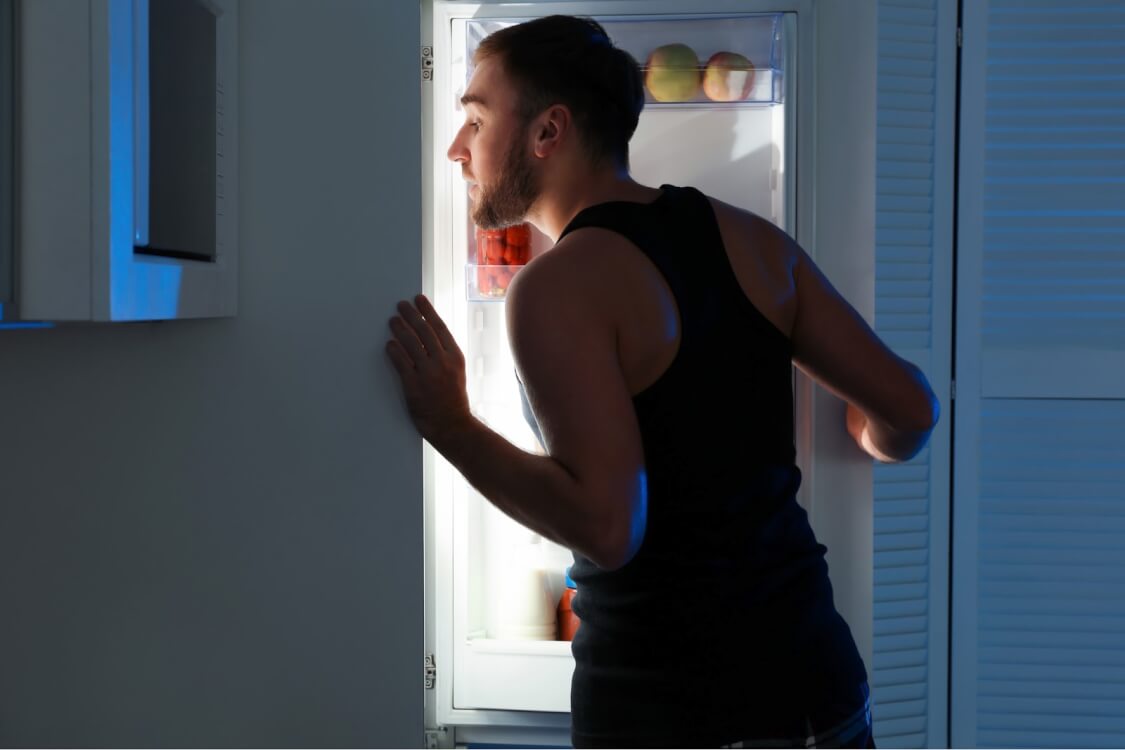What happens if you smoke too much weed? It’s a question people often think about but are too nervous to ask freely.
Luckily, more and more people are now using cannabis as both a medicine and a means of recreation with the advent of cannabis becoming legal in several U.S. states and Canada.
Slowly, the world is changing attitudes and laws worldwide.
But, even experienced users can sometimes consume too much cannabis, which often results in some rather unpleasant side effects and greening out.
That’s why were going to break down what happens if you smoke too much weed, how much weed is too much, and what to do to mitigate the effects.
THC and the Endocannabinoid system
Unsurprisingly, these effects are all mediated by your ECS (Endocannabinoid system).
Responsible for a range of bodily functions ranging from metabolism to energy levels and even memory, the ECS is as important as your immune and central nervous system.
THC, marijuana’s most prolific endocannabinoid, influences the ECS directly, causing many of the psychoactive and physical effects that users enjoy.
However, the over-stimulation of your endocannabinoid system through THC can lead to a host of negative side effects. These are commonly grouped together and understood as “greening out.”
So what happens if you smoke too much weed? Let’s dive right in.
10 Signs You Smoke Too Much Weed
- Munchies
- Cottonmouth
- Tremors
- Diminished memory
- Paranoia and anxiety
- Psychosis
- Increased heart-rate
- Nausea and vomiting
- Immobility
- Cannabinoid Hyperemesis Syndrome
The Munchies

One of marijuana’s many medicinal benefits is its ability to stimulate appetite among patients who’ve lost their appetite. The most notable being chemotherapy and autoimmune disease patients.
However, anyone who’s experienced with cannabis knows about the “munchies”. It’s a seemingly insatiable hunger that persists for most of the psychoactive experience. You’ll find yourself repeatedly raiding the pantry in search of sweet and savoury snacks when you smoke too much weed.
The science surrounding this hungry phenomenon is still in its infancy. But what we do know is that the cannabinoid THC directly affects your Endocannabinoid system.
Preliminary research suggests that the interaction between THC and ghrelin, a hormone secreted by the stomach which mediates hunger, is the leading cause behind the appetite-inducing effect.
While marijuana’s appetite-inducing effects have helped medical patients eat, your average user might discover that they’re eating too much.
To avoid being overly influenced by the munchies, try eating a full meal and having a few glasses of water before you toke up.
Source healthier snack options so if ever do succumb to the munchies, at least you won’t be clearing a family-sized bag of chips yourself.
Cottonmouth
Commonly attributed to the drying effects of smoke, cottonmouth is the uncomfortable effect of an extremely parched mouth and throat. However, that’s only one half of the story.
Mammalian tissues contain 2 primary endocannabinoid receptors, CB1 and CB2. These receptors are also present within your mouth’s salivary glands. Acting through these receptors, THC serves to decrease blood flow towards these glands, decreasing the stimulation of the secretory saliva cells within.
Unfortunately, due to the nature of your endocannabinoid system, cottonmouth is nigh impossible to avoid.
It comes as no surprise then that the best way to alleviate the symptoms of cottonmouth is just to drink water or your beverage of choice.
If liquids are insufficient, demulcents such as halls and cough drops – drugs that coat your mouth with protective film can help to mitigate the drying effects.
Tremors
Many patients find that consuming cannabis can reduce the tremors caused by medical conditions like Parkinson’s Disease and Multiple Sclerosis.
However, some healthy cannabis users find that consuming cannabis sometimes induces tremors without an underlying cause.
Many medical patients utilize THC to drastically reduce tremors and spasms induced by conditions such as Parkinson’s Disease and Multiple Sclerosis. But, some seemingly healthy cannabis users find that consuming cannabis can sometimes induce tremors without any underlying cause.
Although current research is still lacking, there are theories circulating to explain why this happens to users without a medical history.
The most logical explanation is that these shakes are symptoms of THC withdrawal. Long-time users of marijuana trying to quit may find that they are more easily irritated, experience muscle pain, and suffer chills, which could explain the shakes and tremors.
Additionally, THC trials in animals have found that its consumption can actually lower body temperature as well as inhibit movement. This is another possible explanation for the shakes.
To avoid tremors and shakes, ensure that you’re warm and cozy. If you’re aiming to quit, gradually taper your cannabis consumption instead of going straight cold-turkey. It might take longer but you’re sure to experience less severe withdrawal symptoms.
Diminished Memory
Due to the psychoactive nature of the cannabis high, THC’s effects on our perception and memory are mind-altering, sometimes even inducing hallucinations.
A common symptom for many users, short-term memory loss is one of the mental impairments that THC causes.
If you find yourself having difficulty finishing your thoughts mid-sentence, that might be a good sign to stop before the more severe effects of overconsumption start to kick in.
If it’s difficult to remember what you had for dinner last night, then it might be a good idea to stop altogether and take a tolerance break.
Paranoia and Anxiety

Paranoia and anxiety are often explained away as a rite of passage for beginner and novice smokers. Thanks to recent animal trials, they may no longer be the case.
Recent studies involving mice have shown that THC in low to moderate doses helps alleviate feelings of anxiety while high doses can make it worse.
It still holds true that novice consumers have yet to acclimate to the psychoactive effects. But evidence supports the idea that over-consumption will lead to increased anxiety.
This problem is most easily alleviated through proper dosing. With edibles, try waiting a longer period of time after eating (especially if you’ve eaten) to allow the THC to kick in before consuming a larger dose. Additionally, CBD has been found to be helpful in mitigating feelings of anxiety and paranoia.
Get Accurate Dosages Every Time With Our Store’s Topicals And Tinctures
Psychosis
Psychosis is a rather broad term that can be difficult to define. There seems to be a suite of symptoms that adversely affect some cannabis users after prolonged use. Studies have found that moderate cannabis consumption leads to an increased risk of developing psychotic symptoms.
In addition to paranoia, the symptoms of cannabis induced-psychosis can include extreme social anxiety, panic attacks and even delusions.
Fortunately, these symptoms tend to disappear within a few weeks of ceasing to consume cannabis.
However, it should also be noted that studies suggest that marijuana does not induce psychosis. Instead, they may act as a trigger for pre-existing mental illnesses.
Increased Heart Rate
When you smoke too much weed it can cause a person’s heart rate to drastically increase, which can lead to a stroke or a heart attack.
In addition, it can also exacerbate any pre-existing heart conditions that a cannabis user may have and especially so in long-term cannabis users by placing them at a higher risk of heart attack and stroke.
Smoking in general, marijuana or otherwise, increases your heart rate and blood pressure by lowering the amount of oxygen entering your system.
Additionally, THC acts to dilate blood vessels, decreasing your blood pressure. These two effects can cause a heart attack during or immediately after consuming THC.
Users who have pre-existing heart or cardiovascular conditions should consult with a doctor before consuming cannabis. Avoid strenuous exercise while consuming THC to avoid exacerbating its effects.
Marijuana “Hangover”

While marijuana is often touted as a cure for a host of ailments, its overconsumption can lead to residual effects the next day. This effect is most commonly attributed to edibles, whose high THC contents can be debilitating to first-time and novice users. A first-time consumer of edibles may find that the high can last well into the next day.
Sufferers may find that their symptoms are acute feelings of fatigue, lethargy, general haziness, mild nausea, and dry eyes/mouth.
Similar to an alcohol hangover, there are unfortunately no immediate remedies for a weed hangover other than time, but there are steps you can take to mitigate the effects.
Staying hydrated will aid in relieving nausea, dry eyes and mouth and a warm shower can aid in making you feel more refreshed. If you were too nauseous to eat the previous day, eating a full meal can give you the energy necessary to work through the hangover.
Like any hangover, a marijuana hangover will go away on its own in due time – a good night’s sleep is usually all that’s needed.
Energize Your Day While Medicating Your Mornings With CBD Coffee
Immobility
Certain indica strains are famous for their “couch lock” capabilities. They essentially sedate the consumer and immobilizing them in one place. For many marijuana connoisseurs, a strong “couch lock” inducing strain is just what they’re looking for to wind down after a rough day. But the same effect can be scary for users not well versed in marijuana.
Immobilization can be a terrifying experience, made doubly so by the accompanying paranoia and anxiety that marijuana consumption brings along. As with a marijuana “hangover,” the only remedy is time.
Thankfully, “couch lock” is neither life-threatening nor permanent, so the best thing you can do is hunker down and ride it out.
Cannabinoid Hyperemesis Syndrome
A relatively recent discovery, Cannabinoid Hyperemesis Syndrome is a condition induced by chronic and long-term consumption of marijuana. Its chief characteristic symptoms are acute nausea, frequent vomiting, and abdominal pain.
The syndrome is seemingly paradoxical – it induces symptoms which marijuana is supposed to mitigate. Sufferers usually experience a sudden onset of symptoms, initiated by the consumption of marijuana. The exact bodily mechanisms leading to this condition are still unknown, but what’s certain is that the cause is an abundance of THC over a period of years.
There is currently no known cure for this condition other than the cessation of marijuana use. Hot showers and baths can halt the symptoms, but this is only a temporary measure, as the symptoms recur once the sufferer leaves the hot water. If you’re beginning to experience the effects, it’s best to cease marijuana consumption and consult a medical professional.
Final Thoughts on Smoking Too Much Weed
Now you know what can happen when you smoke too much weed.
Whether you are new to consuming cannabis or are a highly experienced user, you should be aware of the 10 signs when you smoke too much weed and the risks associated with doing so.
But, when consumed with moderation, most people find that consuming cannabis is not only a very pleasant experience. It can help to alleviate anxiety, insomnia, depression, pain and a whole host of other medical conditions.
Here’s our list of 5 key takeaways to ensure your marijuana experience is as enjoyable and beneficial for you as possible.
Proper Dosing
Don’t let your peers pressure you into consuming more because you’re a “light weight.” Proper dosing is imperative to an enjoyable experience. Overconsumption can only serve to cause distress and possibly lead to an episode of “greening out.” Whether you’re smoking or consuming edibles, start off with a low dose and move up from there.
Eat Beforehand
Just like alcohol, consuming marijuana on an empty can lead to increasingly severe effects. Try snacking or eating a full meal before you start your session to mitigate the munchies as well as marijuana’s more unpleasant side effects.
Relax
While marijuana is known to alleviate stress and feelings of anxiety, surrounding yourself with trusted friends in a safe and comfortable environment will do more to help you relax than weed will.
If you feel like you consumed too much, take some time for yourself and take a few deep breaths and seek assurance from your peers.
Drink water
Always have a glass of water or your beverage of choice readily available whenever you’re consuming cannabis.
The inhalation of smoke combined with the effects of THC can severely dehydrate you and lead to headaches, migraines, and discomfort.
Take a Tolerance Break
If you find yourself increasingly experiencing negative side effects from consumption, then it might be a good time to take a step back and halt your consumption.
Constant consumption leads to increased tolerance which can make you green out or lead to Cannabinoid Hyperemesis Syndrome.

